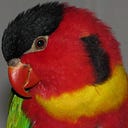Element of the week: Ruthenium
What do fountain pens, platinum jewellery and deep-sea titanium pipes have in common?
by GrrlScientist for The Guardian | @GrrlScientist
This week, we’re meeting ruthenium, a chemical element that even I’d forgotten about! Ruthenium has the symbol Ru and the atomic number 44. This rare element was named for the area of Eastern Europe that includes present-day western Russia, Ukraine and Belarus, as well as parts of Poland and Slovakia. As you can see in the above image, ruthenium is a hard, lustrous silvery metal. It is in the precious metal, or platinum, group (group 8) of the periodic table.
One of the rarest metals on earth, ruthenium is becoming increasingly valuable as we better understand just how useful it is. Ruthenium does not tarnish at room temperatures, nor is it attacked by hot or cold acids or by aqua regia (which can dissolve gold). Resistance to corrosion is one of ruthenium’s important qualities: adding tiny amounts of ruthenium to create alloys with other metals likewise makes them corrosion-resistant and also strengthens them. These alloys are commonly used in platinum jewellery and in electrical contacts that must resist wear. Currently, 50 percent of the ruthenium that we dig up is used by the electronics industry and 40 percent is used by the chemical industry, whilst the remainder is primarily used to create alloys of platinum (for jewellery) and titanium (for corrosion-resistant underwater pipes).
Ruthenium has no known biological role nor is it poisonous, although ingested ruthenium is concentrated and retained by the bones, which (I suppose), prevents them from corroding.
Many of us have met ruthenium whilst admiring expensive writing instruments. Parker pens uses ruthenium to make the nib of its “RU” fountain pen: the nib is 14-carat gold with a ruthenium tip.
Here’s the Professor telling us a little more about ruthenium, and he’s also correcting an “embarrassing” mistake in the first version of this video:
You’ve already met these elements:
Technetium: Tc, atomic number 43
Molybdenum: Mo, atomic number 42
Niobium: Nb, atomic number 41
Zirconium: Zr, atomic number 40
Yttrium: Y, atomic number 39
Strontium: Sr, atomic number 38
Rubidium: Rb, atomic number 37
Krypton: Kr, atomic number 36
Bromine: Br, atomic number 35
Selenium: Se, atomic number 34
Arsenic: As, atomic number 33
Germanium: Ge, atomic number 32
Gallium: Ga, atomic number 31
Zinc: Zn, atomic number 30
Copper: Cu, atomic number 29
Nickel: Ni, atomic number 28
Cobalt: Co, atomic number 27
Iron: Fe, atomic number 26
Manganese: Mn, atomic number 25
Chromium: Cr, atomic number 24
Vanadium: V, atomic number 23
Titanium: Ti, atomic number 22
Scandium: Sc, atomic number 21
Calcium: Ca, atomic number 20
Potassium: K, atomic number 19
Argon: Ar, atomic number 18
Chlorine: Cl, atomic number 17
Sulfur: S, atomic number 16
Phosphorus: P, atomic number 15
Silicon: Al, atomic number 14
Aluminium: Al, atomic number 13
Magnesium: Mg, atomic number 12
Sodium: Na, atomic number 11
Neon: Ne, atomic number 10
Fluorine: F, atomic number 9
Oxygen: O, atomic number 8
Nitrogen: N, atomic number 7
Carbon: C, atomic number 6
Boron: B, atomic number 5
Beryllium: Be atomic number 4
Lithium: Li atomic number 3
Helium: He atomic number 2
Hydrogen: H atomic number 1
Video journalist Brady Haran is the man with the camera and the University of Nottingham is the place with the chemists. You can follow Brady on twitter @periodicvideos and the University of Nottingham on twitter @UniNottingham
Originally published at The Guardian on 30 December 2011.
